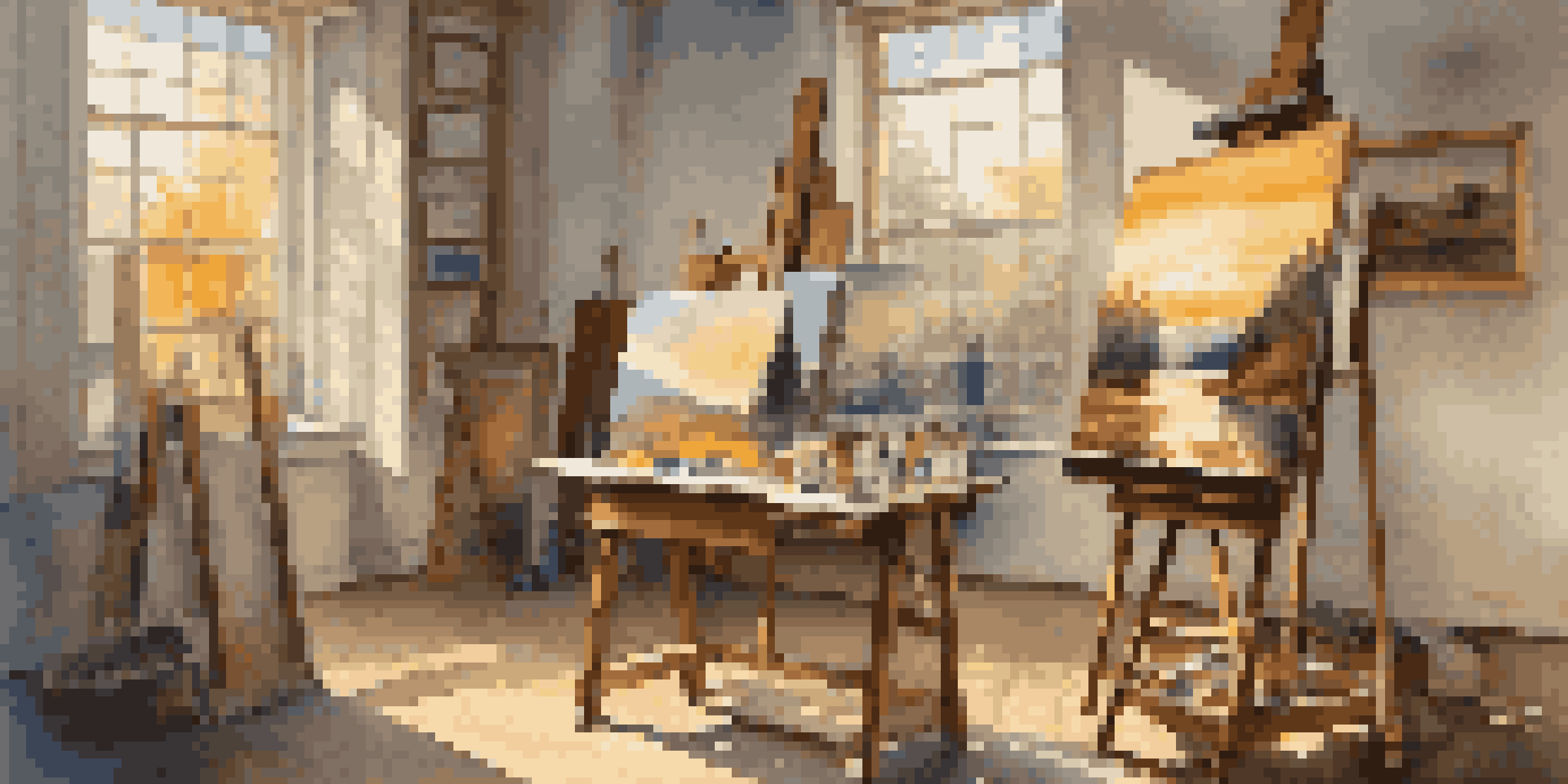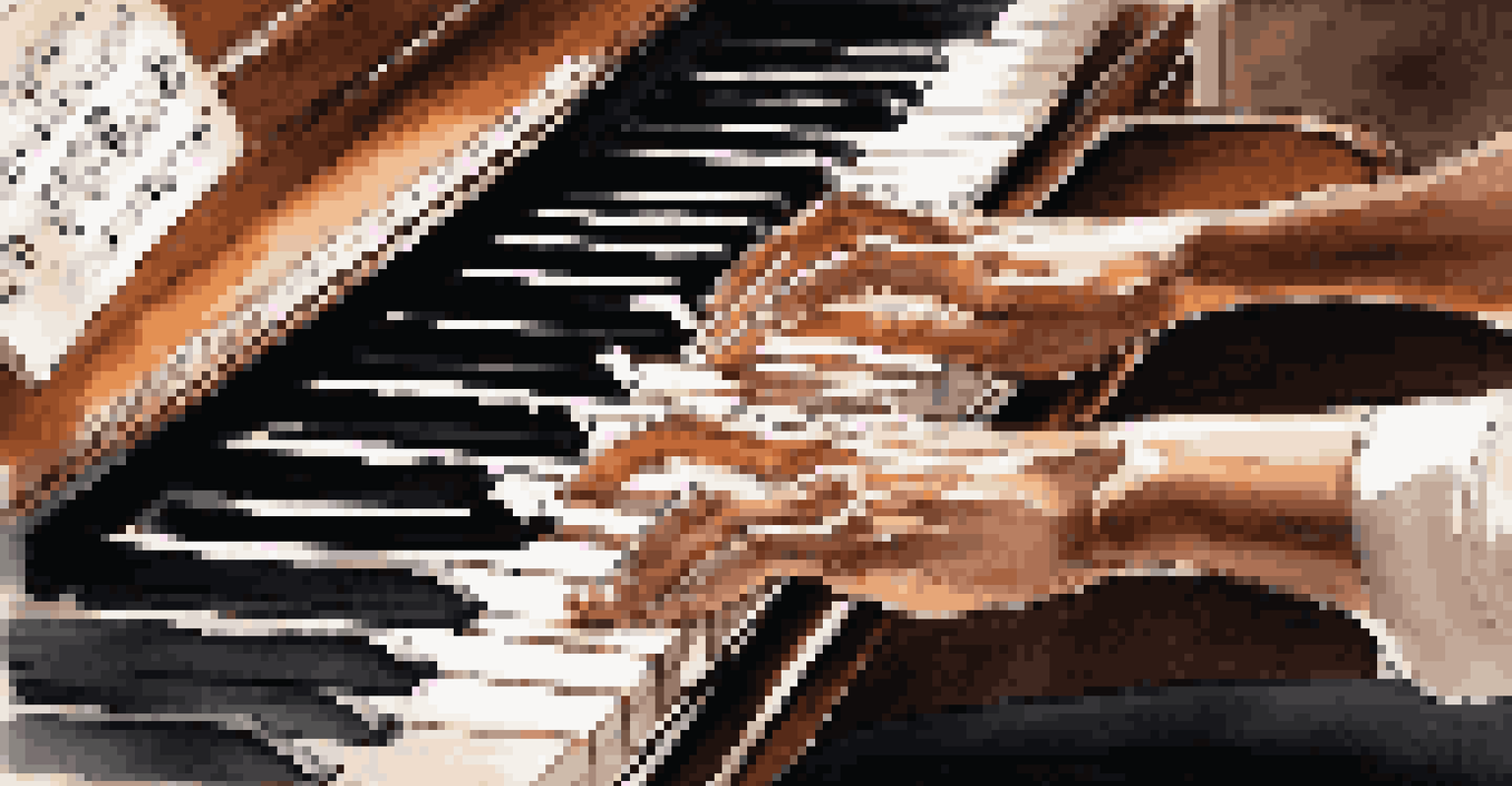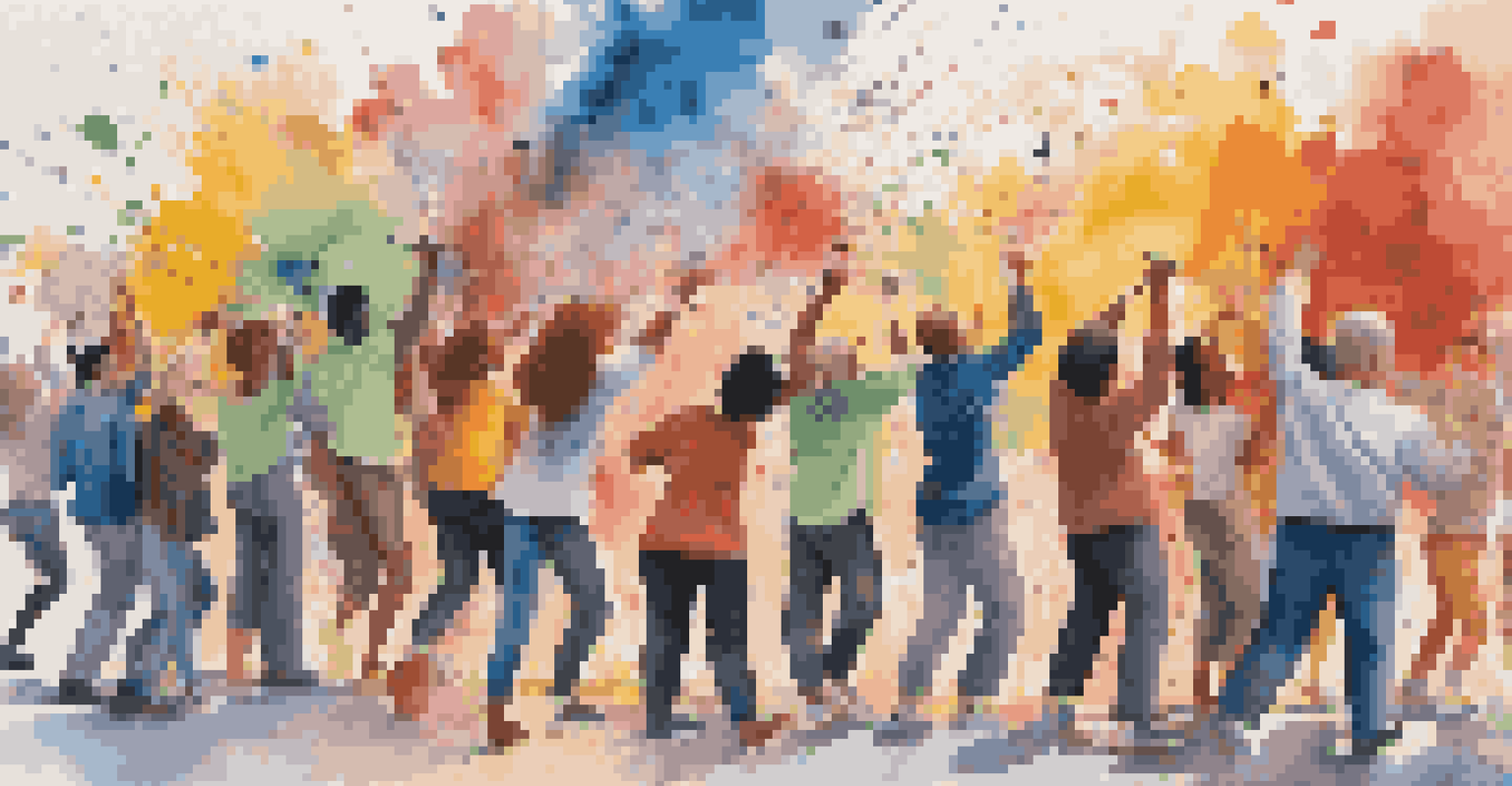Art and Neuroscience: Understanding Creativity's Mechanisms

The Fascinating Link Between Art and the Brain
Art has always been a reflection of human experience, but what lies behind the creative process? Neuroscience has begun to uncover the brain's intricacies that facilitate artistic expression. By studying how artists think and create, researchers can gain insights into the neural pathways that ignite creativity.
Every artist dips his brush in his own soul, and paints his own nature into his pictures.
For instance, when someone engages in painting or music, different areas of the brain light up, showcasing collaboration between logic and emotion. This interplay is crucial as it allows for both structured thought and spontaneous inspiration. As we delve deeper, it becomes clear that creativity isn't just an abstract concept but a complex biological function.
Understanding this connection can enhance our appreciation for art and the human mind. It opens up avenues for artists to explore their creativity more profoundly, while also providing educators and psychologists with tools to foster creative thinking in various settings.
Neuroplasticity: The Brain’s Ability to Adapt
One of the most remarkable aspects of the brain is its neuroplasticity—the ability to reorganize itself by forming new neural connections. This capability is especially relevant in the context of creativity and artistic expression. When someone practices an art form, the brain adapts, refining its pathways to improve skills and enhance creative output.

Consider a musician who dedicates hours to practice; over time, their brain physically changes, becoming more adept at processing musical patterns and emotions. This phenomenon highlights how creative endeavors can literally reshape the brain, fostering not only artistic talent but also improving problem-solving skills in daily life.
Art and Brain: A Dynamic Duo
Neuroscience reveals that artistic expression is deeply rooted in complex brain functions and neural pathways that ignite creativity.
Embracing neuroplasticity can encourage individuals to pursue artistic hobbies, regardless of their background. By understanding that every stroke of the brush or note played can contribute to brain development, we can motivate more people to explore their creative potential.
The Role of Emotions in the Creative Process
Emotions play a critical role in fueling creativity, acting as both a muse and a challenge. Research shows that feelings like joy, sadness, and even frustration can inspire artists to create compelling works. This emotional engagement often leads to a deeper connection with the audience, resulting in art that resonates on a personal level.
The creativity of life is in the mind, and the mind is often free to wander to create.
For example, consider how Vincent van Gogh's turbulent life experiences influenced his iconic paintings. His emotional struggles are vividly expressed in his use of color and brushwork, allowing viewers to feel his pain and passion. This connection between emotion and creativity illustrates how the brain processes feelings to produce impactful art.
By recognizing the importance of emotional expression in creativity, artists can harness their feelings to enhance their work. This understanding encourages a more honest and authentic approach to art-making, ultimately leading to richer and more relatable creations.
Creativity and the Default Mode Network
The Default Mode Network (DMN) is a group of brain regions that activate when we're at rest and not focused on the outside world. Interestingly, this network is also crucial during the creative process. When individuals daydream or let their minds wander, the DMN comes into play, facilitating the generation of new ideas and connections.
This phenomenon explains why some of the best creative ideas often arise during mundane activities like showering or taking a walk. As the brain relaxes, it can tap into a reservoir of imagination, allowing for innovative thoughts to emerge. This underscores the idea that creativity thrives in moments of mental freedom.
Neuroplasticity Enhances Creativity
The brain's ability to adapt through neuroplasticity allows artistic practice to physically reshape neural connections, improving creative skills.
Recognizing the value of downtime can significantly benefit artists and creators. It encourages them to incorporate breaks into their routines, promoting a healthy balance between focused work and allowing the mind to roam free.
Cognitive Flexibility: A Key to Artistic Innovation
Cognitive flexibility refers to the brain's ability to switch between thinking about different concepts and to think about multiple concepts simultaneously. This trait is essential for artists, as it enables them to explore various styles, techniques, and ideas. The more flexible one's thinking, the more innovative their artistic expressions can be.
For example, an artist who can easily transition between abstract and realistic styles may create unique works that blend both approaches. This ability to adapt and shift perspectives is what often sets groundbreaking artists apart from their peers. It’s a skill that can be cultivated through practice and exploration.
Encouraging cognitive flexibility in creative endeavors can lead to exciting outcomes. Artists who push their boundaries and experiment with different mediums or concepts often find themselves discovering new pathways to creativity.
The Impact of Collaboration on Creative Output
Collaboration can amplify creativity, as working with others often introduces new ideas and perspectives. When artists team up, they can challenge each other's thinking and push the boundaries of their creative processes, leading to innovative projects that wouldn’t have been possible alone. This dynamic can be especially powerful in interdisciplinary collaborations.
Take the example of a visual artist working alongside a musician; the fusion of visual and auditory elements can create a multi-sensory experience that captivates audiences. This synergy often results in art that transcends traditional boundaries, creating something entirely unique and engaging.
Collaboration Fuels Innovative Art
Working with others in artistic endeavors introduces fresh ideas and perspectives, leading to innovative projects that push creative boundaries.
Encouraging collaboration in creative environments can foster a culture of innovation. By bringing together diverse talents and viewpoints, we can inspire artists to break free from conventional norms and explore uncharted territories.
Future Directions: Merging Neuroscience and Artistic Practice
As neuroscience continues to evolve, its integration with artistic practices holds great potential for the future. By utilizing brain imaging technology, artists can gain insights into their creative processes, understanding what works best for them in terms of inspiration and productivity. This knowledge can help refine their techniques and enhance their artistic expression.
Moreover, educational institutions are beginning to incorporate neuroscience principles into art curricula, teaching budding artists how their brains function during the creative process. This approach not only demystifies creativity but also equips students with tools to harness their unique cognitive abilities.

The merging of neuroscience and art offers exciting prospects for both fields. As we deepen our understanding of how the brain influences creativity, we can unlock new ways to enhance artistic practice and appreciation, paving the way for future generations of artists.